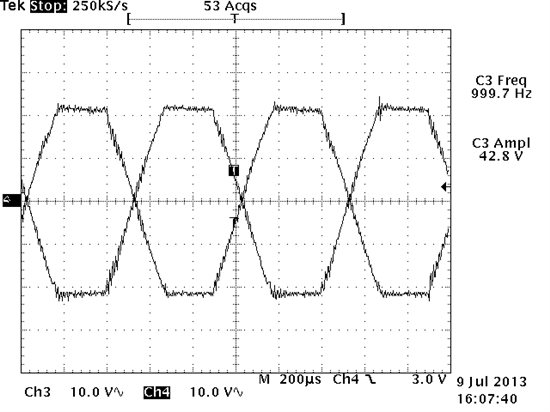Hello,
I would like to ask help of you people, since I cannot figure it out. Problem is, that when amplifier is about to enter clipping, it rings badly. To my concern, its not fault of board layout, because we made three different prototypes, and they did exactly the same thing, other than that, circuit works on 100%. Circuit is almost the same as TI´s eval board, I´ve already burned thing in, at 300W RMS for 8 hours, an no problems, it withstood numerous shor at output, and over temperature also works, its really good amp, but this problem ruins it. When Linear AB class people see this, they automatically start with blabbering how bad the D class is.. so anyway, here are the pictures what it looks like.
Normal operation, just bellow clip, we already see some blurring on the top of sine:
Start of clipping, THIS IS THE PROBLEM:
And this is how the thing looks like: http://adresat.rajce.idnes.cz/TAS5613#IMGP7297.jpg >you can browse in album for more pics.
Any help is apreciated, thank you.





.png)
.png)
